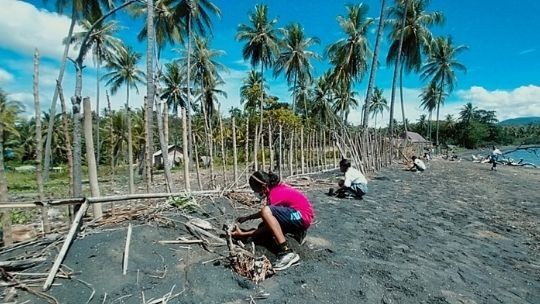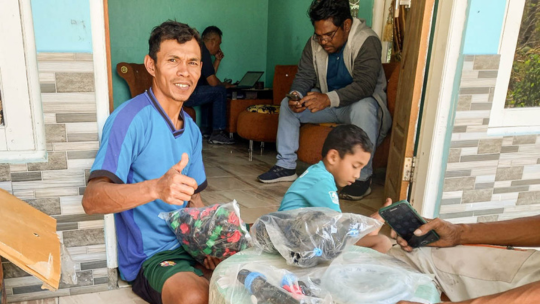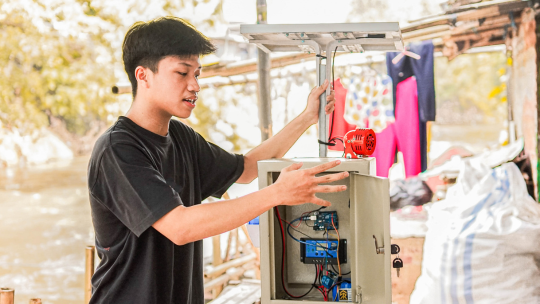Understanding 3 Traditional Ceremonies of the Asmat Tribe in Papua

The Asmat tribe in Papua lives on small islands with mangrove vegetation near the sea, in the southwestern part of the island of Papua. These coastal people occupy a vast lowland swamp area of approximately 9,652 square miles (25,000 square kilometers) in southwestern Papua Irian Jaya. The Asmat population is estimated to be around 65,000 people, residing in villages with populations of up to 2,000.
Their language is a Papuan language known as Asmat-Kamoro, which has more than 50,000 speakers.
The Asmat people believe that they emerged from wood, making wood sacred to them. Even in ancient times, they carved beautiful objects from wood. The Asmat tribe is regarded as the best woodcarvers of the Stone Age, with many of their carvings displayed in museums around the world.
Understanding the Asmat Tribe
The Asmat tribe in Papua is indigenous to the region and is divided into two groups: those living in the interior and those along the coast. The lifestyles, mindsets, social structures, and daily lives of these two groups are very different. For instance, the Asmat in the interior are typically hunters and garden farmers, while those on the coast prefer fishing.
They share physical characteristics, with an average height of about 172 cm for men and 162 cm for women. Their skin color is generally dark, with curly hair. This similarity arises because the Asmat are descendants of Polynesian peoples.
The Asmat tribe spreads from the Arafura Sea coastline to the Jayawijaya Mountains. The vast territory of Asmat Regency means that distances between villages or hamlets and sub-districts are significant, compounded by the swampy terrain.
The Asmat are known as skilled carvers, recognized internationally. There are many types and varieties of Asmat carvings, typically depicting stories about their ancestors, daily life, and their love for nature.
The Asmat people enjoy dances and songs, which they perform to welcome guests, celebrate harvests, or pay tribute to their ancestors' spirits. Although modern culture has influenced their lives significantly, traditions and customs remain deeply ingrained and difficult to erase.
Asmat Tribal Ceremonies in Papua
Death Rituals
For the Asmat of Papua, a person's death is not attributed to ordinary causes but to evil spirits that disturb and cause the person's demise. Therefore, the Asmat believe that sick individuals should be surrounded by a fence made from palm tree branches to keep evil spirits away. The community gathers around the sick person without providing treatment or food. However, after the individual passes away, they will rush to embrace and roll in the mud.
The body is then placed on a bamboo platform until it decomposes. The Asmat will store the bones in a wooden tree.
Mbismbu
The Mbis ceremony involves carving statues of deceased ancestors or relatives. This traditional ceremony serves to keep the memory of the deceased alive. If the death was due to murder, they will seek revenge by killing the perpetrator.
Yentpokmbu Ceremony
In Asmat tradition, there is a building known as the Bujang House, or Jew. This house is a vital and inseparable part of Asmat life. Due to its significance, a special ceremony must be held before constructing it. Only unmarried men are permitted to reside in the Bujang House, though women may enter during significant events.
Asmat groups name the Bujang House after its owner. It serves both religious and secular purposes, as well as family gatherings. However, under certain circumstances, such as an attack, women and children may be allowed inside.
Each village has a Bujang House, which is the center of Asmat life. It serves as an initiation place where young men learn skills such as fighting, playing the tifa (a type of drum), fishing, and ancestral stories.
In Asmat language, "bujang" means "spirit," preventing community fragmentation. The traditional Asmat houses are made of local wood, rattan, and palm leaves for roofing. Each house typically has 7-10 doors, one main fireplace, and several others on the sides. The number of doors and fireplaces indicates the number of families or clans in each village.
In Asmat culture, each clan or family is allocated two doors and two fireplaces. The Bujang House is not evaluated solely by its length and width but is inherited from ancestors. The fireplaces symbolize the home for each group. Carvings of war heads from deceased groups adorn the posts of the Bujang House.
Asmat Culture
Asmat art, literature, and music are closely linked to rituals and ceremonies. Many ritual festivities feature epic poetry readings, sometimes sung over several days, often recounting legendary heroes, myths, or real-life events.
Music and song are seen as social bonds, recreation, and spirit possession. The Asmat drum and conch shell are considered sacred, with drums traditionally made from monitor lizard skin tied to hollow wooden logs.
After learning about the Asmat tribe in Papua, you will discover their rich cultural heritage. They hold their ancestors in high regard, as evidenced by their traditions. The Asmat tribe possesses a unique culture that deserves further exploration when visiting Papua.
Wahana Visi Indonesia invites everyone to participate in creating a better Indonesia through its programs. For more information, visit https://wahanavisi.org/



